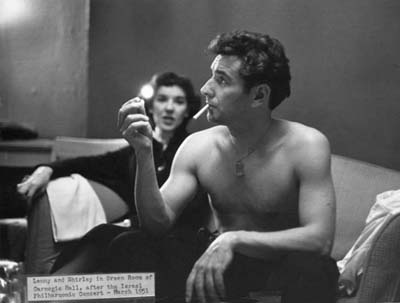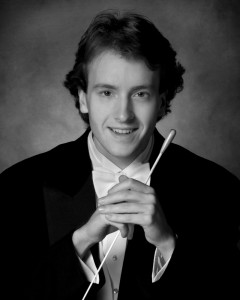just a test
Brahms Tragic Overture from William White on Vimeo.
Musician
just a test
Brahms Tragic Overture from William White on Vimeo.
Steven Lemons writes a very interesting piece in the Phoenix New Times on the continuing imbroglio between Michael Christie and the Phoenix Symphony.  My goodness, what controversy!!  And check out those comments — Mr. Christie seems to inspire very passionate opinions both from his admirers and his detractors.  That probably means he’s doing something right.
Speaking of trade mags and puff pieces, what is this “Listen” Magazine that showed up in my mail today? Â Did everybody else get this? (he asks his non-existent readership…) Â I haven’t actually read it yet, but if I were to judge it by it’s cover (which I think you can do with a magazine) I’d say it’s total crap — just look at the quality of the print and the paper.
A further examination of the contents reveals that this is just another BBC Music or Grammaphone magazine — a bunch of puff pieces about the most famous classical musicians and some lame CD reviews, sprinkled liberally with ads for pianos and opera recordings. Â And on top of that, there’s no CD. Â BBC and Grammaphone include a CD glued to each edition of their magazines (which makes them even more overpriced than they otherwise would be). Â The “Listen” website has a link called “Purchase Music”, which made me think, “well, maybe for a buck or two, you can download a compilation of the tracks referenced in this issue…”
Instead, you are directed to a search page on ArchivMusic.com that lists ALL OF THE CD’s referenced in this magazine. Â No no no, this will not do. Â Wait a second… flipping through the pages of the magazine, I notice that at least half of the ads are for ArchivMusic. Â Well, I think we’ve adequately solved THAT mystery.
But while I’m on the subject, what’s with this Leonard Bernstein 90th anniversary stuff? Â I mean, come on people, you couldn’t wait 10 years? Â Don’t get me wrong, I think every day should be Lenny day! Â But I don’t like the idea of milking every tiny postmortem milestone for every last drop you can squeeze out of the guy’s name.
I mean, just look at him. Â He’s so beautiful.

OK, and I’ll say it, though I probably shouldn’t: this does bother me a little.
The Paavo Järvi saga continues: Mr. Järvi has entered a plea of not guilty in an Ohio court.  But let’s go to the videotape and be the judges for ourselves:Â
 Also, reader challenge: WHAT IS HE LISTENING TO?  You only get to hear it for like 4 seconds at the start of the video.
It gives me a certain satisfaction to see that there are no fewer than 8 pages of reader comments on this story at cincinatti.com (linked above), the only problem being that so many of the commentators have a real attitude problem, seeing Järvi as some elitist trying to skirt the law.  Why can’t fun little classical music scandals without it being some kind of social commentary?  Where’s our Amy Winehouse or Britney Spears?
Woe is me.
These are both in my YouTube favorites, but for slightly different reasons.
1) This version is maybe even better, but YouTube won’t let me embed it…Â Â Sorry.
Â
2) Ok, maybe this is over-cadenzeroized, but so gloriously. Â And at least she has an ensemble of James Lipton impersonators to back her up!
Â
How often do we get two (2) legitimate items of gossip from the world of classical music?
1) Paavo Järvi, of the Estonian dynasty, charged with DUI.
2) Rufus Wainwright’s opera REJECTED! (Actually, from the description, I’m really looking forward to it.)
(My apologies that MTT isn’t familiar with the tempo of this cha-cha)
So, the latest iteration of “West Side Story” finally opened on Broadway and is pulling in a cool million/week. Â I saw this show in DC during out-of-town tryouts. Â You can tell from the reactions that the critics see this as a way to define themselves. Â As far as I’m concerned Terry Teachout hits the nail on the head.
One really must wonder what the point of Mr. Laurents’ alterations is.  Why the Spanish?  For realism?  Um, I kind of thought this was a musical we were talking about.  If you want realism, make a documentary — chances are you won’t see street gangs singing and dancing through the streets of Manhattan.
Perhpas we should leave the translating to the Takarazuka Revue:

Brand new head shots, courtesy of Rick Mitchell Photography. Â Mr. Mitchell is a great guy and very easy to work with. Â He found my approach very interesting — that is, he is used to working with actors, for whom a head shot really can make the difference between getting an audition and not. Â I, on the other hand, only need these photos for publicity purposes, so they just have to look good. Â Which they do. Â See?

Sandow has been addressing this point, I think brilliantly, for close to a month now.
I think that there is a huge gap between the level of sophistication that professional musicians assume their audiences to possess and the actual level.  My thoughts on this have been hugely influenced by these talks that I give (ps. do you like how my name comes right after Esa-Pekka’s?  Yeah, that’s right.)
At my first talk this season for the Civic orchestra, I was really worried that the audience would find my talk not intellectual enough. Â This is the kind of twisted anxiety that only a U of C education can impart. Â I learned a lot about orchestra audiences that day simply by gauging their reactions. Â My next talk was more focused on what I perceived to be of interest to these people. Â At my most recent talk (yesterday), I was greeted with applause as soon as I stepped to the platform. Â I told the audience that I was very surprised by this reaction. Â Then one person shouted out, “It’s because we’ve heard you before!”
All this is not to toot my own horn (too much) but just to say that I think I’ve very quickly learned a lot about how to relate to an average orchestral audience.  Case in point: I shared a couple of drinks with a friend of mine in the Chicago Symphony after Saturday night’s concert and I mentioned that I was going to talk about Bartòk’s “Music for Strings, Percussion and Celeste”.  She asked what I was going to say.  I said that I would start out by explaining what a celesta was.  Then I would go on to explain what a fugue was.
She was incredulous that such means were necessary. Â And, what do you know, right after my talk, one of my rapt listeners came up and said: “Thank you so much for your talk — I’ll tell you the truth, I never did know what a fugue was!”
There you have it.  At the risk of sounding overly self-satisfied, I would guess that the people who attended my lecture enjoyed the first movement of the Bartòk much more because of my description — that piece can be kind of a snoozer if you don’t know how to appreciate it.
More at another time about how composers deserve the full blame for ruining classical music and which ones are finally starting to take it back. Â For now, a note of hope: there are other composers (besides me, that is) writing real music:Â David Harned Johnson.
This was a very good show, lovely set and costumes, beautiful singing, excellent staging (especially the first act.) Â I’ve seen a number of three act operas lately, and it dawned on me that I would not have the faintest idea of how to go about structuring a 3 act theater piece. Â I’m so totally steeped in the American musical theater tradition of two acts, I just don’t know what you need that third one for.
“Abduction” is a singspiel, and contains some really excellent tunes. Â My only problem with it is that clearly Herr Mozart got a little tired of cute ditties and decided to flex his compositional muscles during the second act. Â Wolfie dear, this is neither the time, nor the place. Â The music is beautiful and all, but the lengthy duets and quartets really take away from the dramatic unfolding of the piece.
Another note on this performance: prior to the show, it was announced that Steven Davidslim had been suffering from a cold but would sing that night anyway, so the audience was asked to be forgiving.  Um, what?  I’m sorry, Mr. Davislim, it just doesn’t work that way.  Either you can sing or you can’t.
This reminds me so much of every musical theater/opera audition I have ever sat through.  Inevitably, people (particularly young people) will come in and mention that they have a cold.  Ugh, JUST GET ON WITH IT!  If you really have a cold, which you don’t, we’ll be able to hear through it.  Auditioners in this situation invariably begin responding to these warnings with: “Oh yes, it seems like there’s something going around”.  Let’s just cut the crap, shall we?
No matter. Â The real star of the night was Matthew Polenzani, a beautiful lyric tenor that filled the entire hall with a rich, full sound. Â Kudos as well to Aleksandra Kurzak and Andre Silvestrelli.
I saw a performance of Mahler’s 7th last night.  While I recognize the evening’s event as a major achievement for both the orchestra and the conductor, I feel totally unqualified to judge the performance beyond that.  I find this piece completely unintelligible.  From start to finish there is not a note that I understand, even after having heard the piece in its entirety several times.
The closest parallel I can think of would be a James Joyce novel like Ulysses or Finnegan’s Wake, works I find equally impenetrable.  However, I know that really brilliant people respect all of these works, so I’ll try not to write them off too quickly.
But really, what the hell are those guitar and mandolin doing in there?